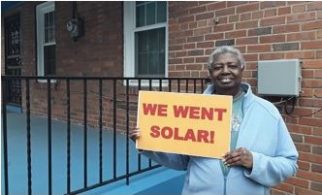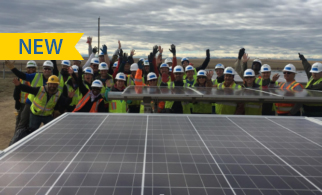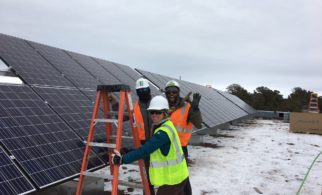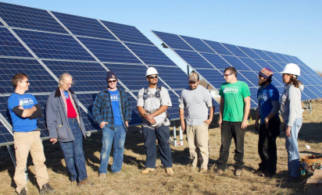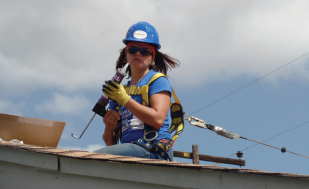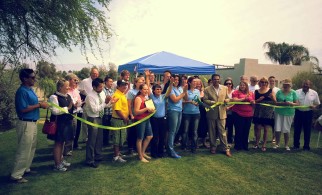California
California, whose energy sector is partially deregulated, is an exceptional example of a state with equitable access solar policies. California recognized early on that all its ratepayers and taxpayers, including low-income families, were contributing to the public dollars used to advance the state’s solar economy, and created targeted programming specifically designed to ensure low-income families can directly benefit from the state’s transition to solar.
Program Overview
California’s Single-Family Affordable Solar Homes (SASH) program has been successful in catalyzing solar adoption by low-income homeowners while helping develop a diverse and highly skilled solar workforce.
SASH launched in 2009 along with its sister program, the Multifamily Affordable Solar Housing (MASH) Program. The programs were financed using 10 percent of the overall $2.2 billion budget from the ratepayer-funded California Solar Initiative (CSI), California’s unprecedented investment in solar market transformation that started in 2006. SASH and MASH are the first-of-their kind programs in the nation. Prior to SASH/MASH, there had not been dedicated low-income solar programs of this size and scope in any state.
The program, which is administered by the nonprofit organization GRID Alternatives, provides qualified low-income homeowners fixed, up-front, capacity-based rebates to help offset the cost of a solar electric system. Currently, the SASH program offers one incentive level of three dollars per watt. Eligible applicants must have a household income that is 80 percent or below the area median income, own and live in their home, receive electrical service from one of three investor owned utilities (PG&E, SCE, or SDG&E), and live in a home defined as “affordable housing” by California Public Utilities Code 2852.
Additional program elements include:
- Gap funding from GRID Alternatives to cover the entire cost of the system on behalf of the low-income participants;
- Capping of system size at 5 kW to maximize participation while ensuring substantive savings.
- Multilingual marketing and outreach to educate and establish trust in low-income communities;
- Simple application process with administrator handling all paperwork;
- Minimum savings requirement and other consumer protections;
- Energy efficiency education and training for all participants; and
- Workforce development and job training initiatives that are incorporated into every installation
Although the California Solar Initiative was scheduled to sunset in 2016, SASH/MASH were reauthorized by Assembly Bill 217 (Bradford, 2013), which extended funding until 2021 or until incentives are encumbered, whichever occurs first. By reauthorizing SASH, the California Legislature recognized that despite reduced solar equipment pricing, low-income families will continue to remain on the sidelines of the clean energy economy without continued price support and incentives. Under AB 217 (the Equitable Access to Solar Energy Act), implemented in January 2015, the SASH Program now also allows a “families-first” third-party ownership (TPO) model that brings the benefits of the federal ITC to participating households.
Additionally, in 2014 the state allocated California Climate Investments funds (funds generated by its cap-and-trade program) for low-income solar projects through the California Department of Community Services and Development’s Low-income Weatherization Program (LIWP). Using a similar structure to the SASH program,LIWP provides up-front rebates to qualifying residents, and can be used in tandem with SASH incentives for residents who qualify for both. The program presently includes a direct incentive ($4.75/watt to $1.75/watt rebate, based on eligibility for other funding programs); gap financing provided by the program administrator; and comprehensive programming (direct energy efficiency coordination and workforce development requirements).
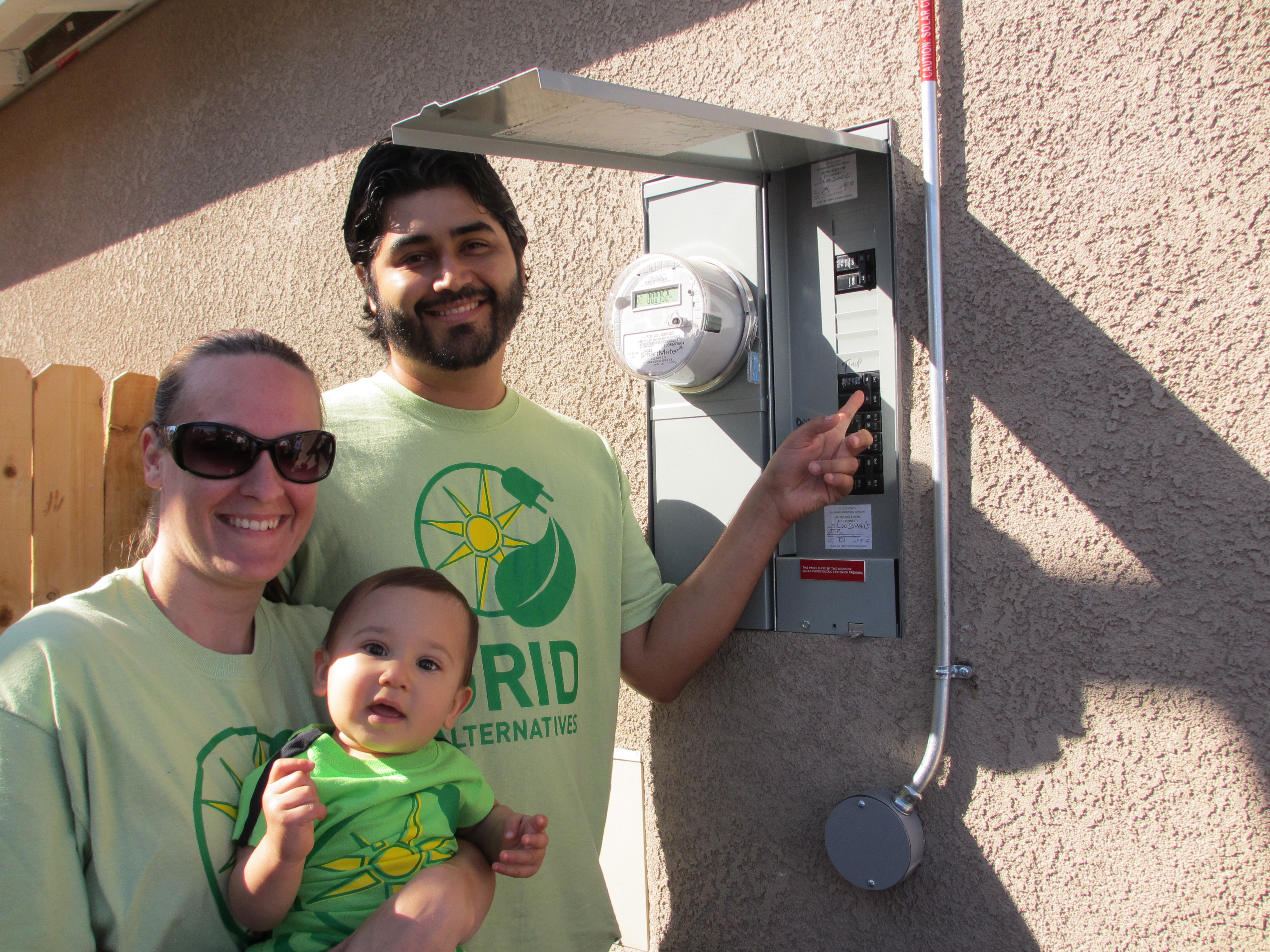
Guiding Principles Addressed
Accessibility and Affordability. By combining fixed, up-front, capacity-based rebates with nonprofit administration, the SASH program enables qualifying homeowners to get solar at no up-front cost and with no ongoing costs, meaning they reap the full financial benefits of the system. In addition, dedicated program outreach ensures robust participation.
Community Engagement. Every SASH and LIWP installation includes opportunities for community members and job trainees to participate. These job training opportunities create lasting value in local communities by creating a workforce of skilled laborers, many from the same communities that the programs aim to serve, that will have high employability in California’s expanding solar job sector.
Consumer Protection. Consumer protection is baked into the SASH program. Incentives are deliberately set at a level to cover a significant percentage of the system cost, and with the remainder covered by the administrator the consumer has no financial liability. The SASH program’s TPO model must meet 12 baseline consumer protection minimum standards, including ensuring customers receive at least 50% of the savings; prohibiting placing of liens on the customer’s home; and protecting the customer against terms that could change after the contract is signed. In addition, theSASH program administrator acts as a consumer advocate, monitoring installation quality, helping participants review contracts, translating materials, and providing industry-standard warranties..
Sustainability and Flexibility. Since the SASH program launch in 2009, the program administrator GRID Alternatives has worked closely with the CPUC’s Energy Division staff and a third-party program evaluator to make program modifications as needed. Significant modifications include addition of a workforce development requirement, and the development of a unique families-first third-party ownership model to improve financing options for the nonprofit administrator.
Compatibility and Integration. The SASH program was designed to complement the state’s energy efficiency (EE) programs. Systems are sized to incentivize EE, and consumers are provided with basic education and referrals to programs that provide no-cost EE upgrades to low-income households.
For more information, see the official SASH Program handbook and read the progress reports.
Last updated: Feb 2018
